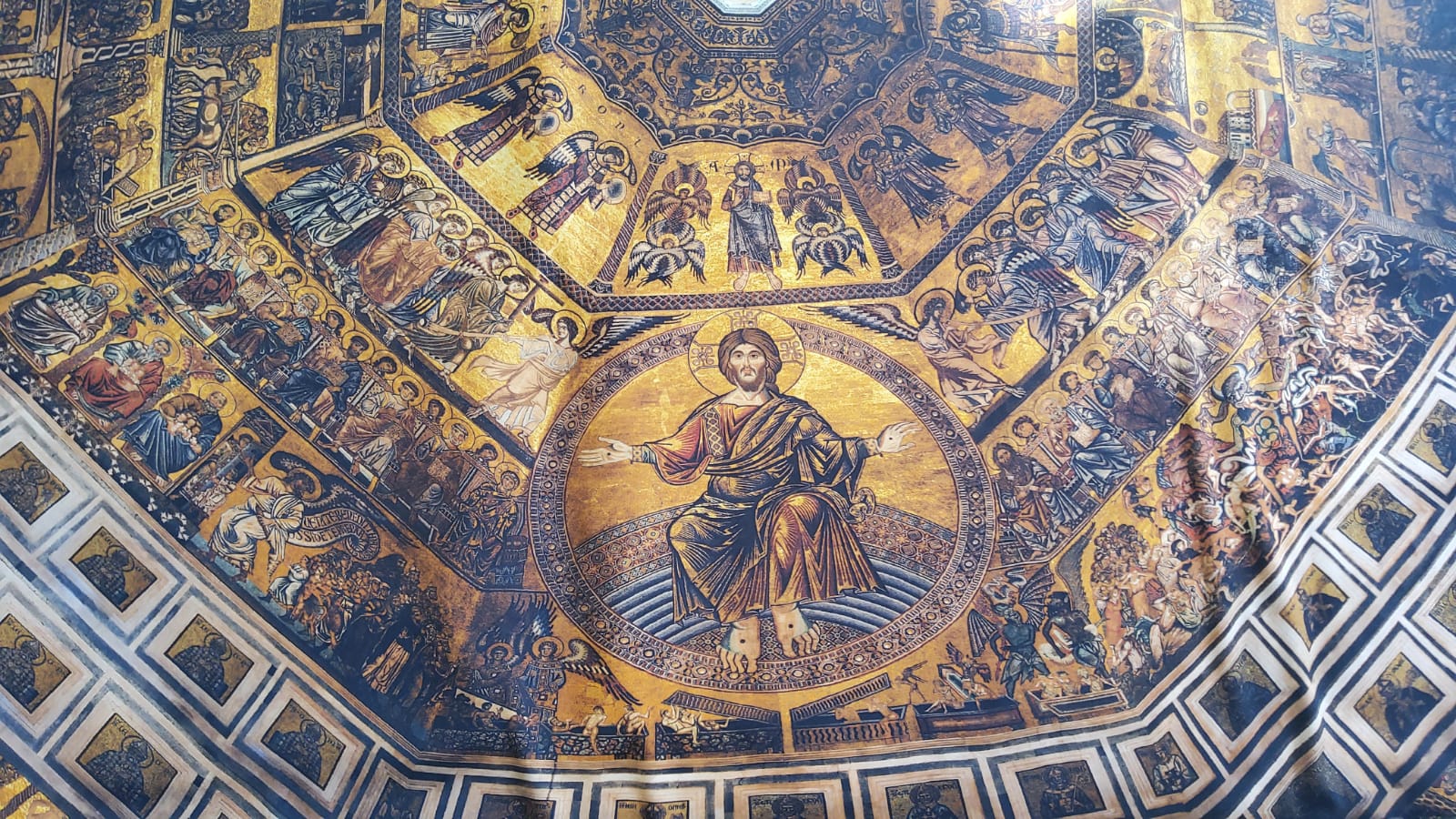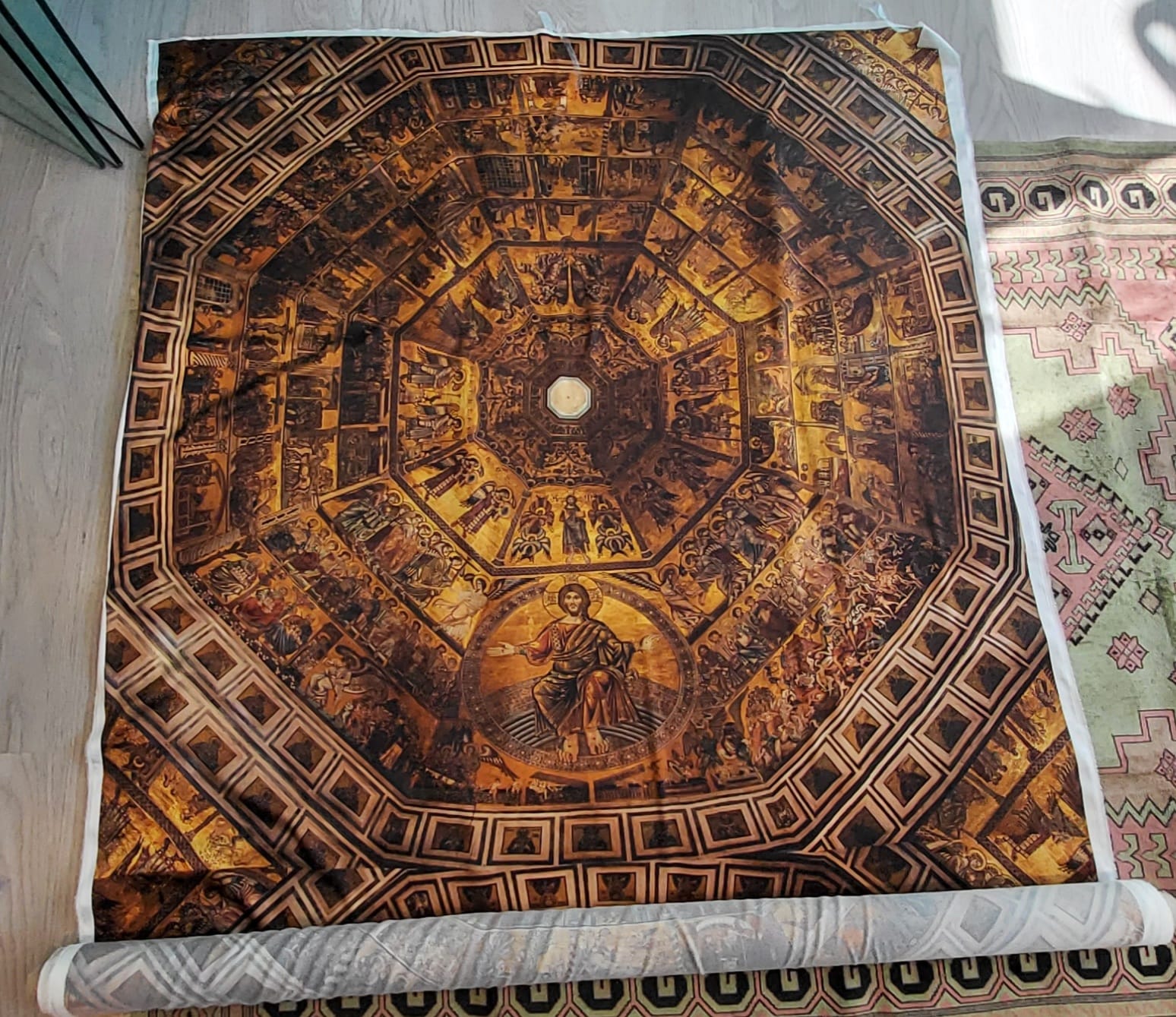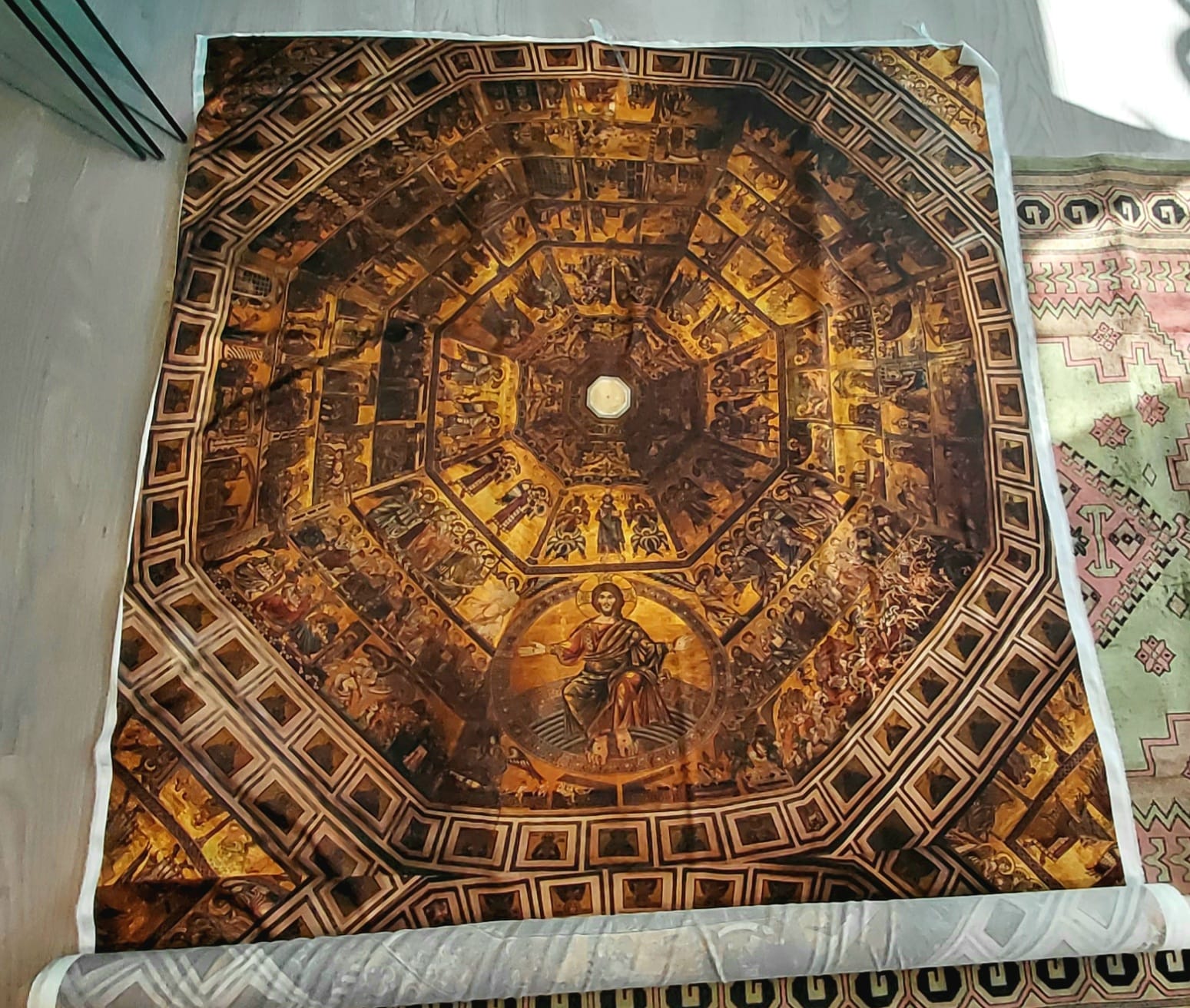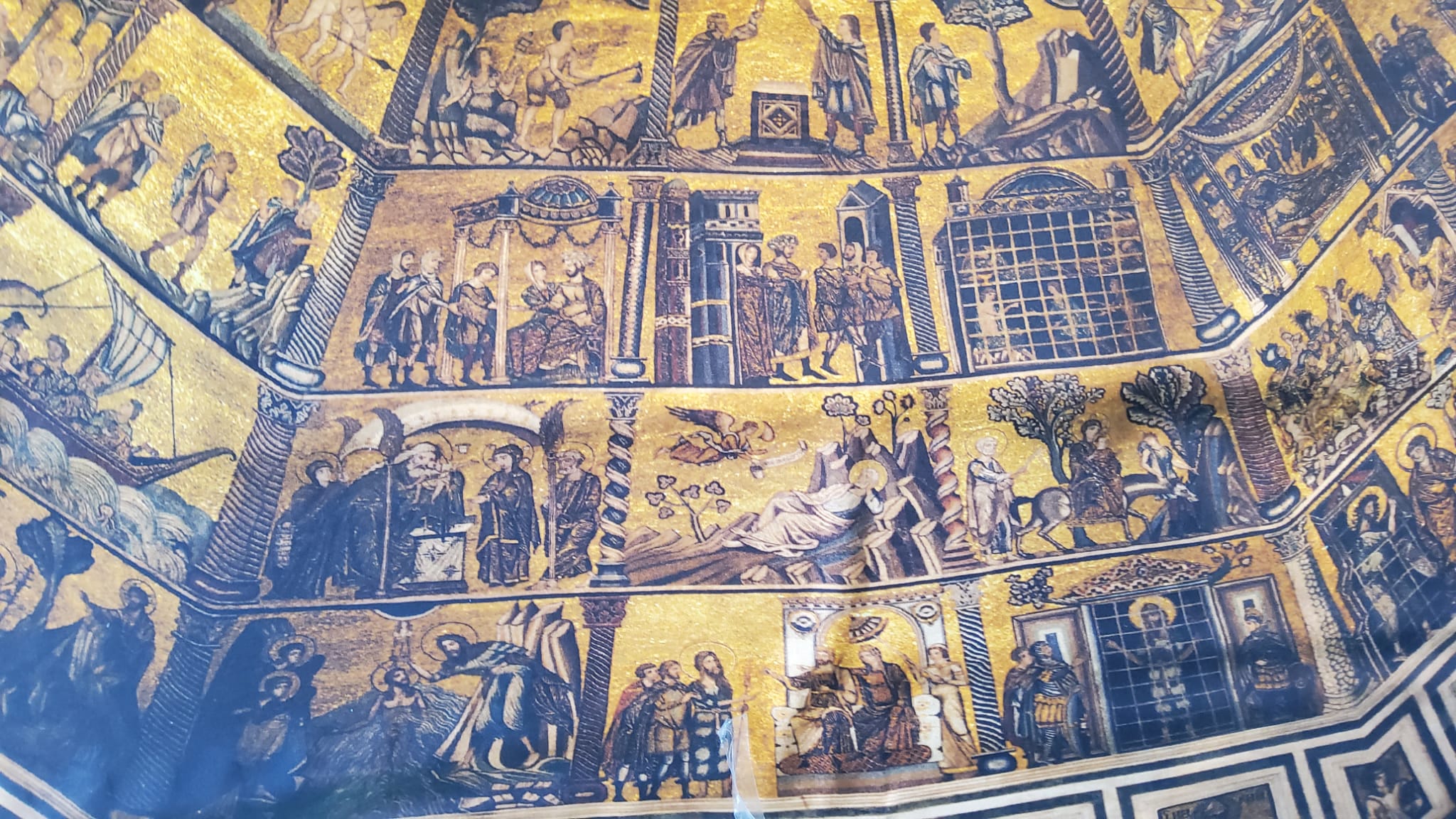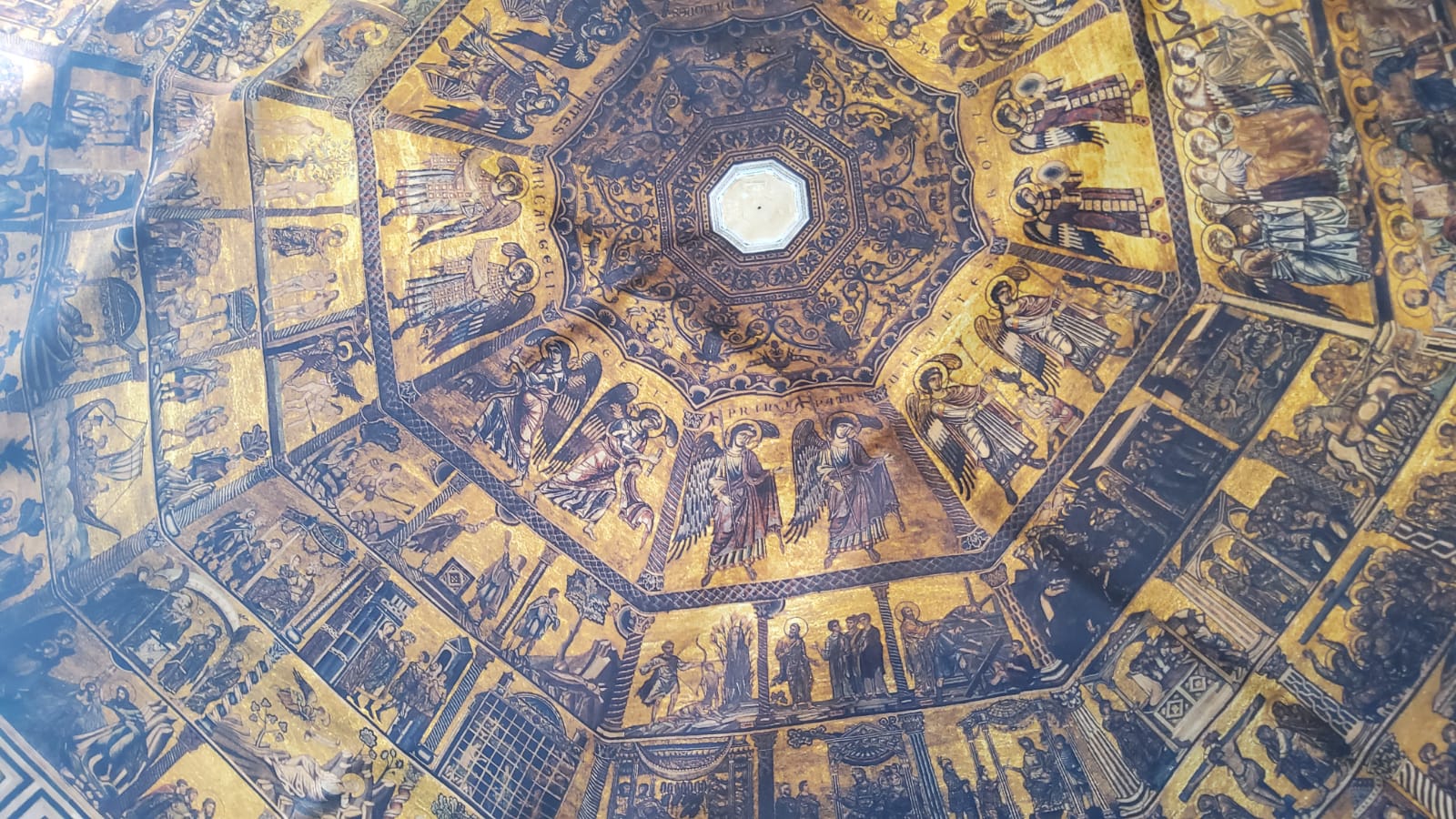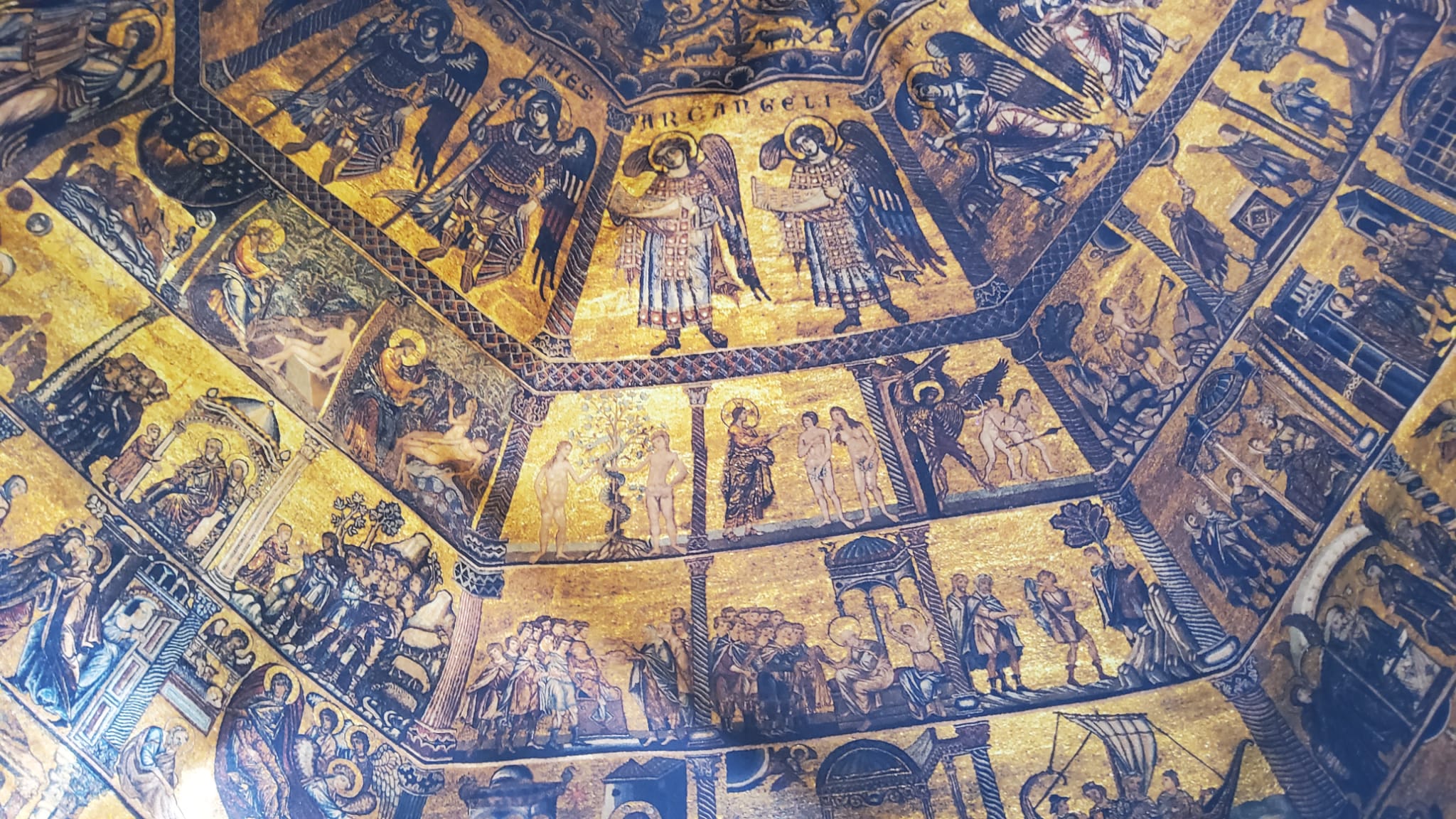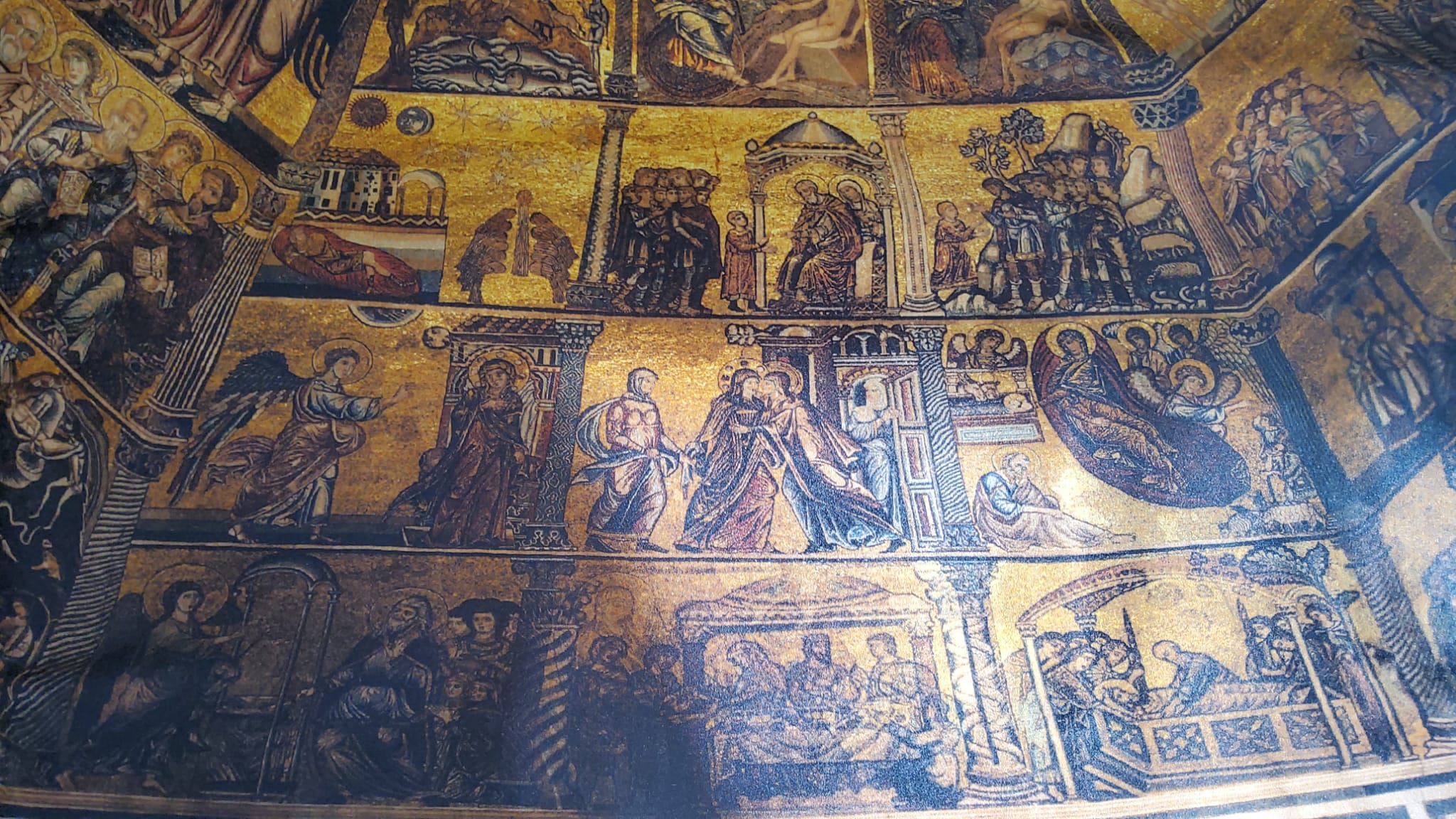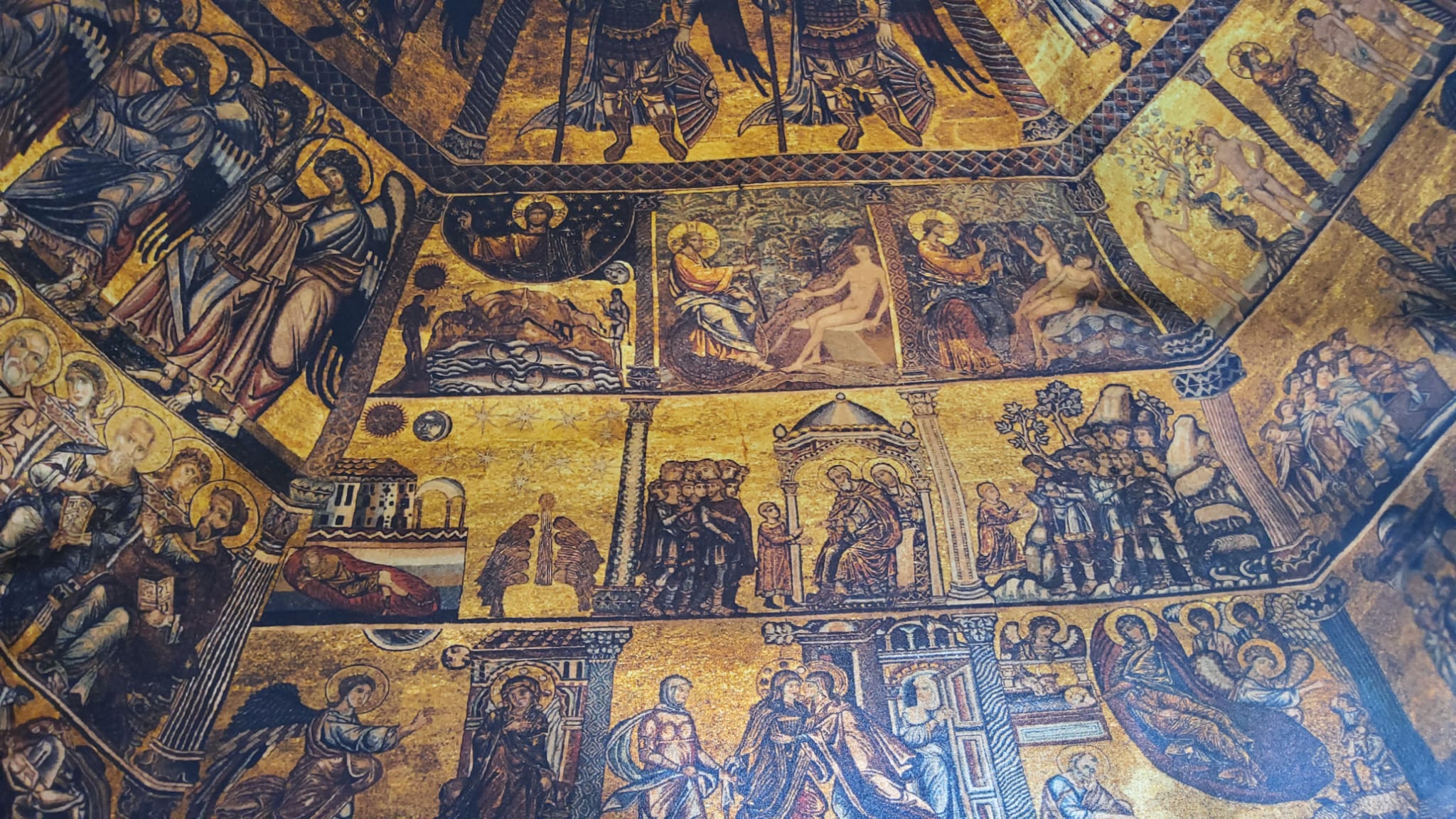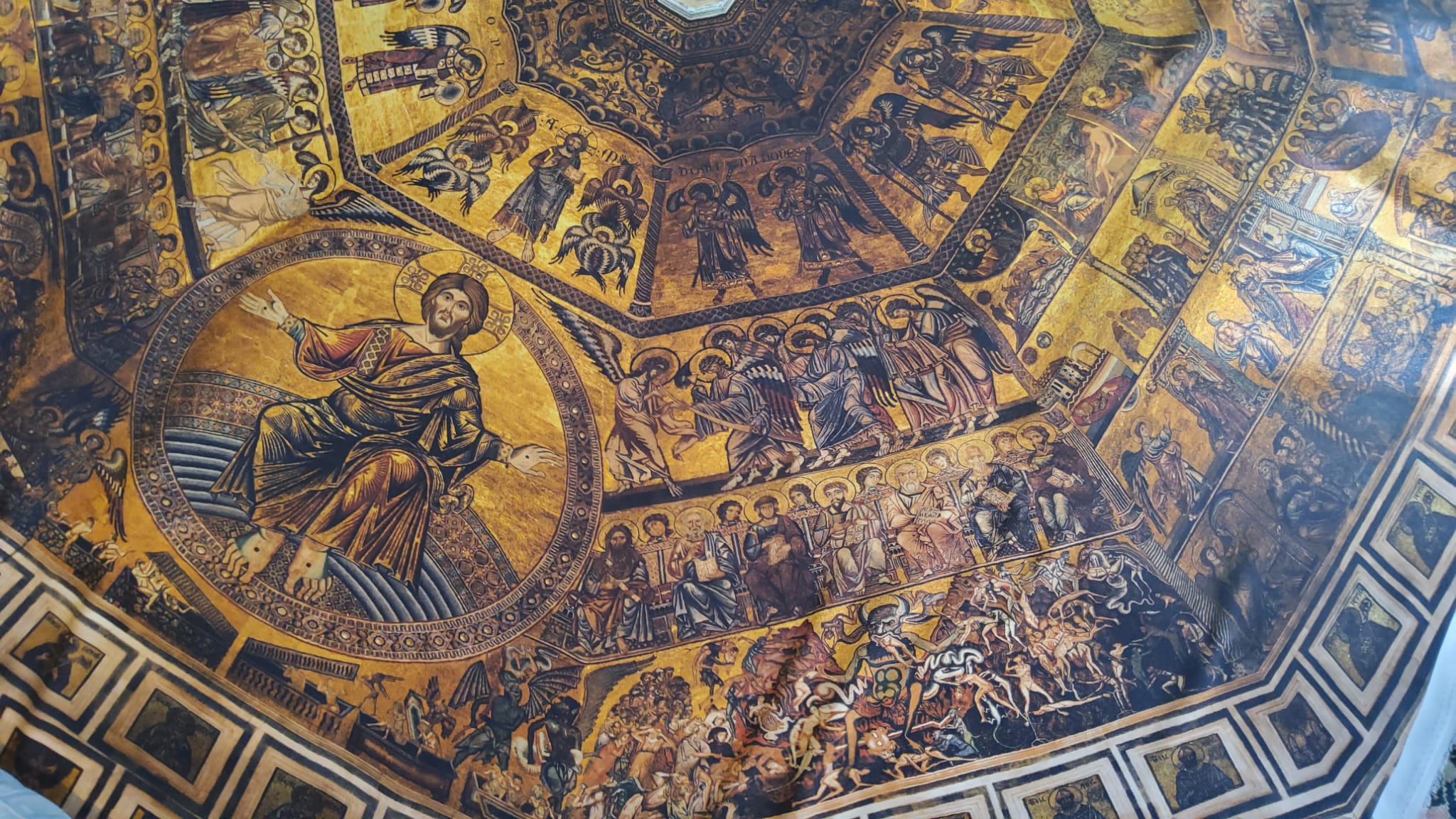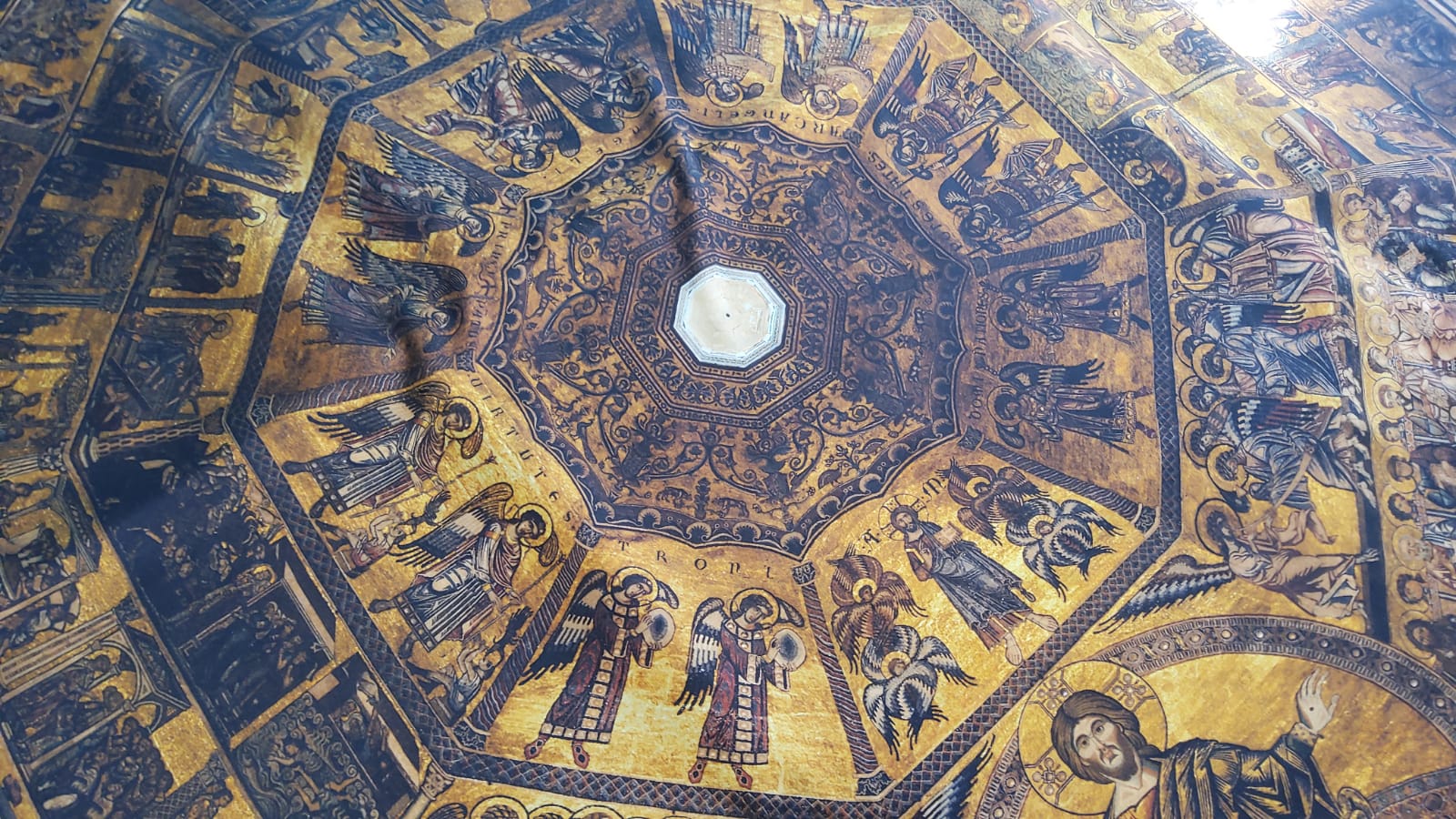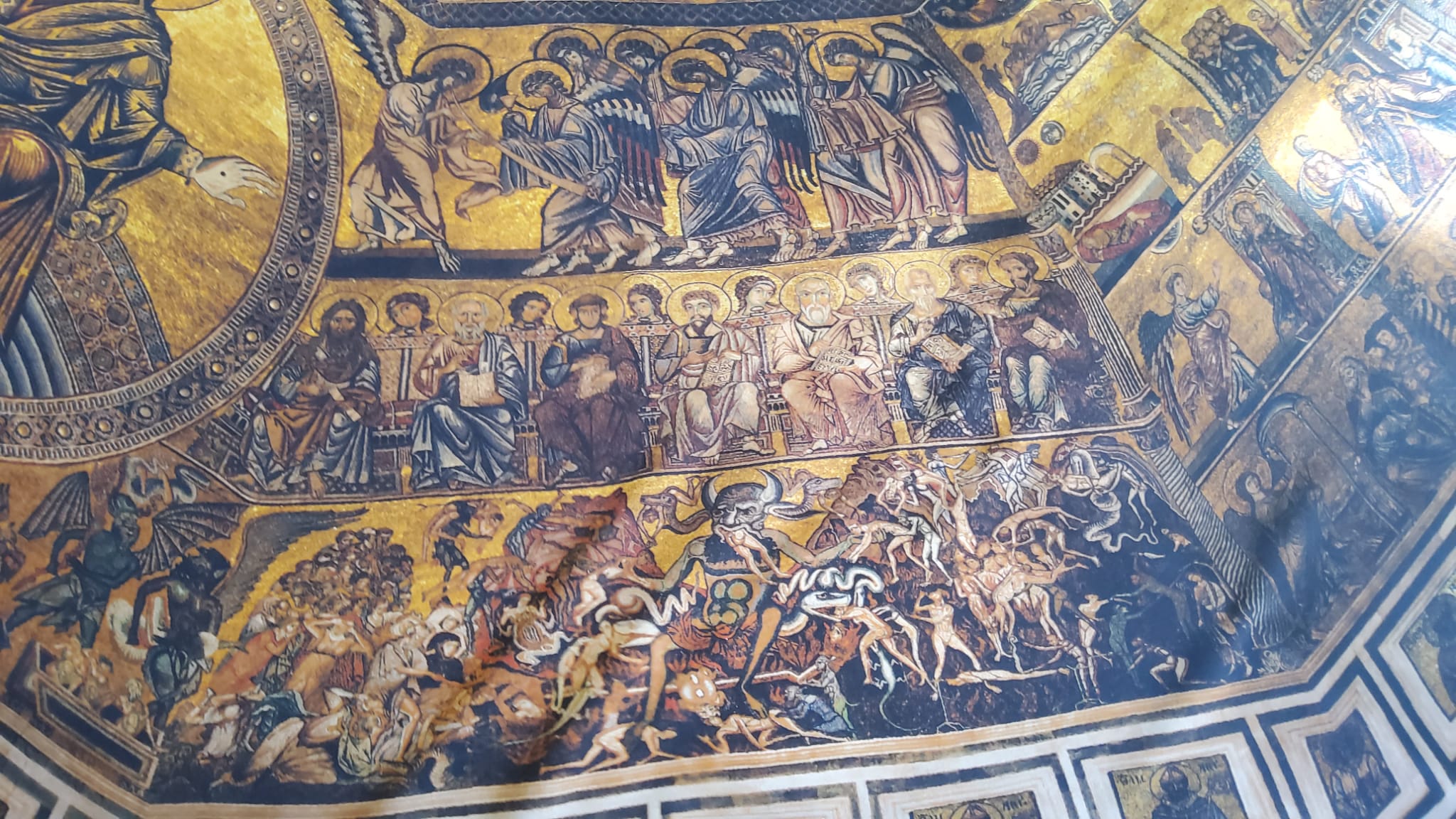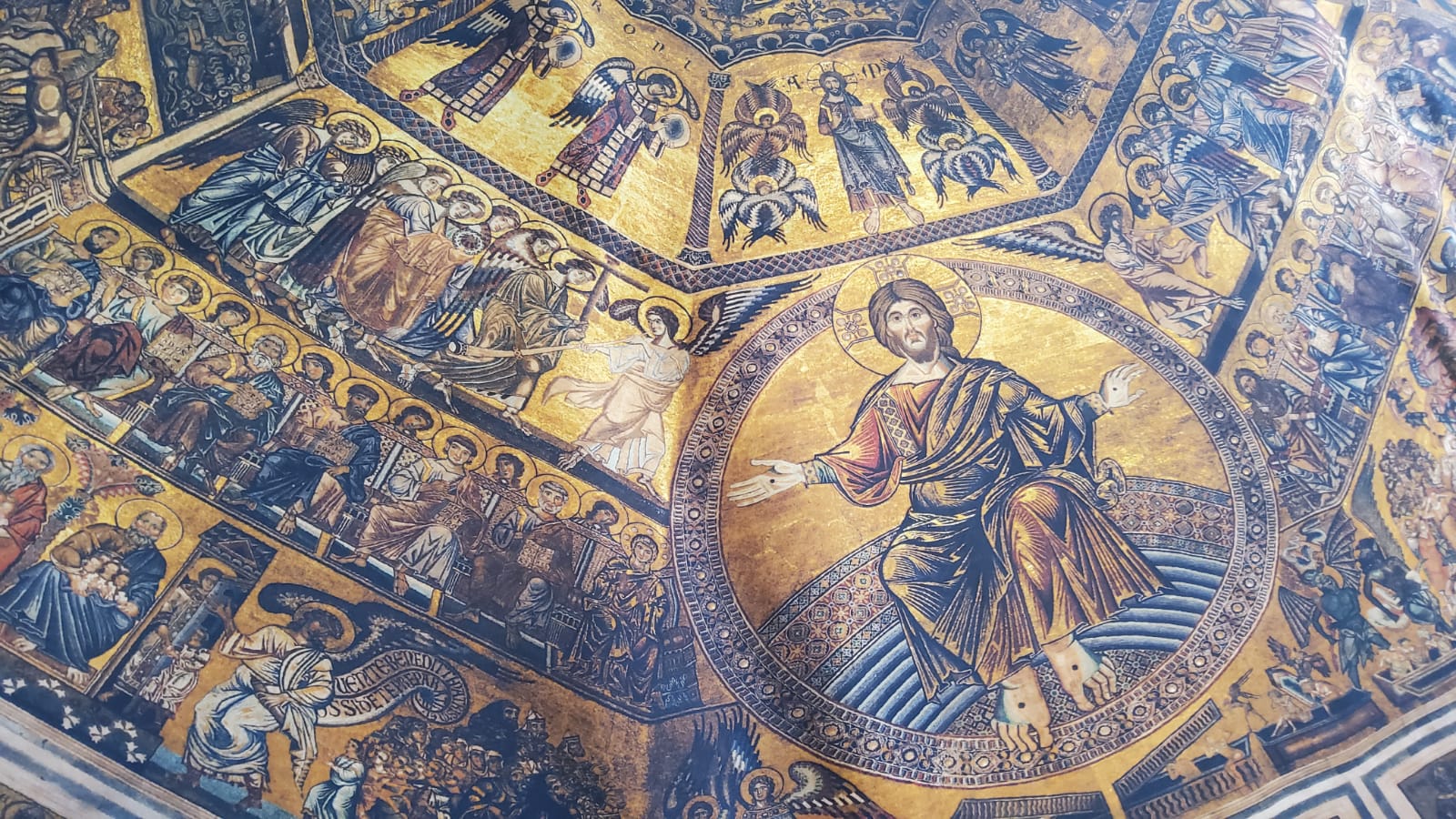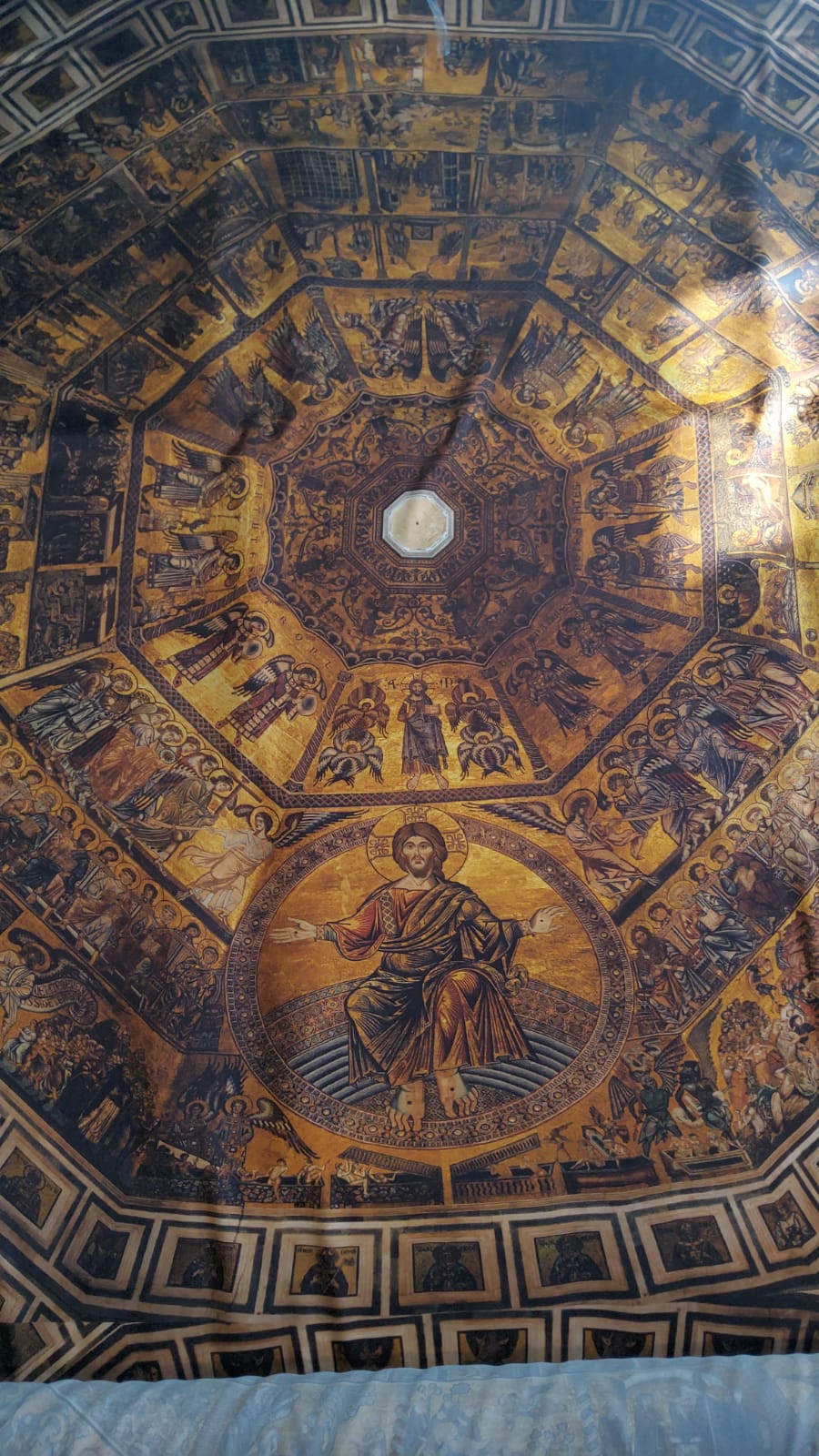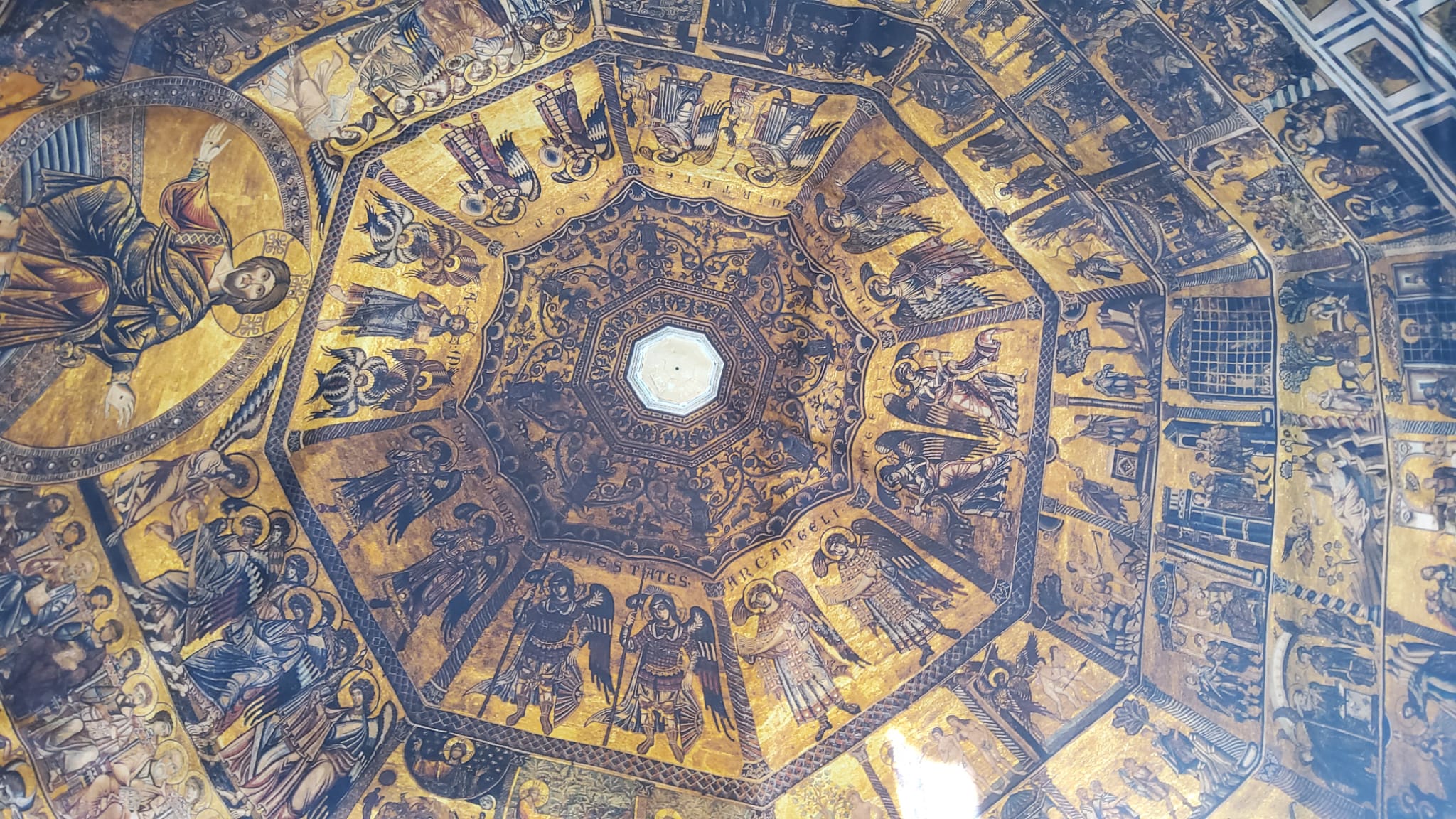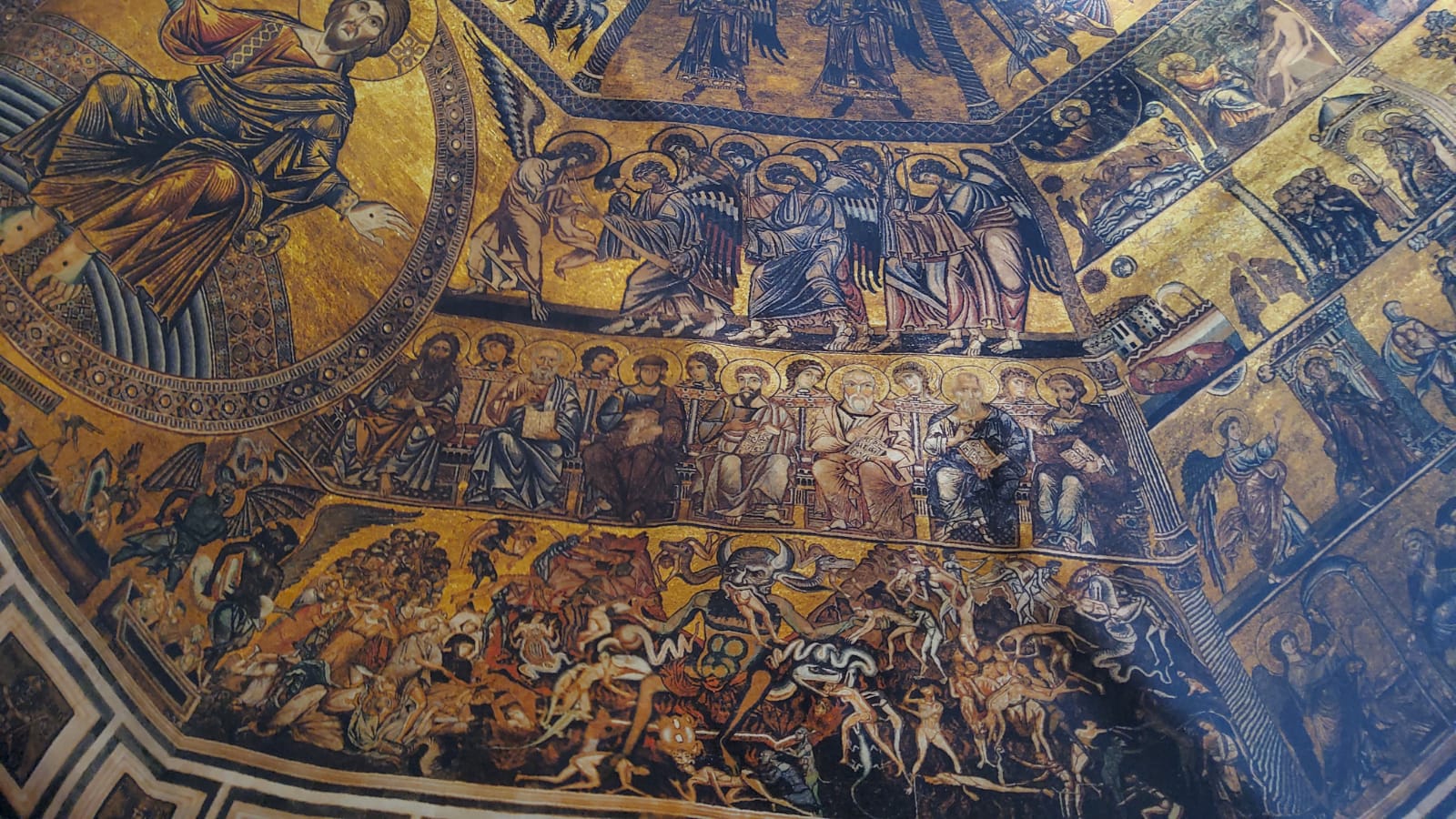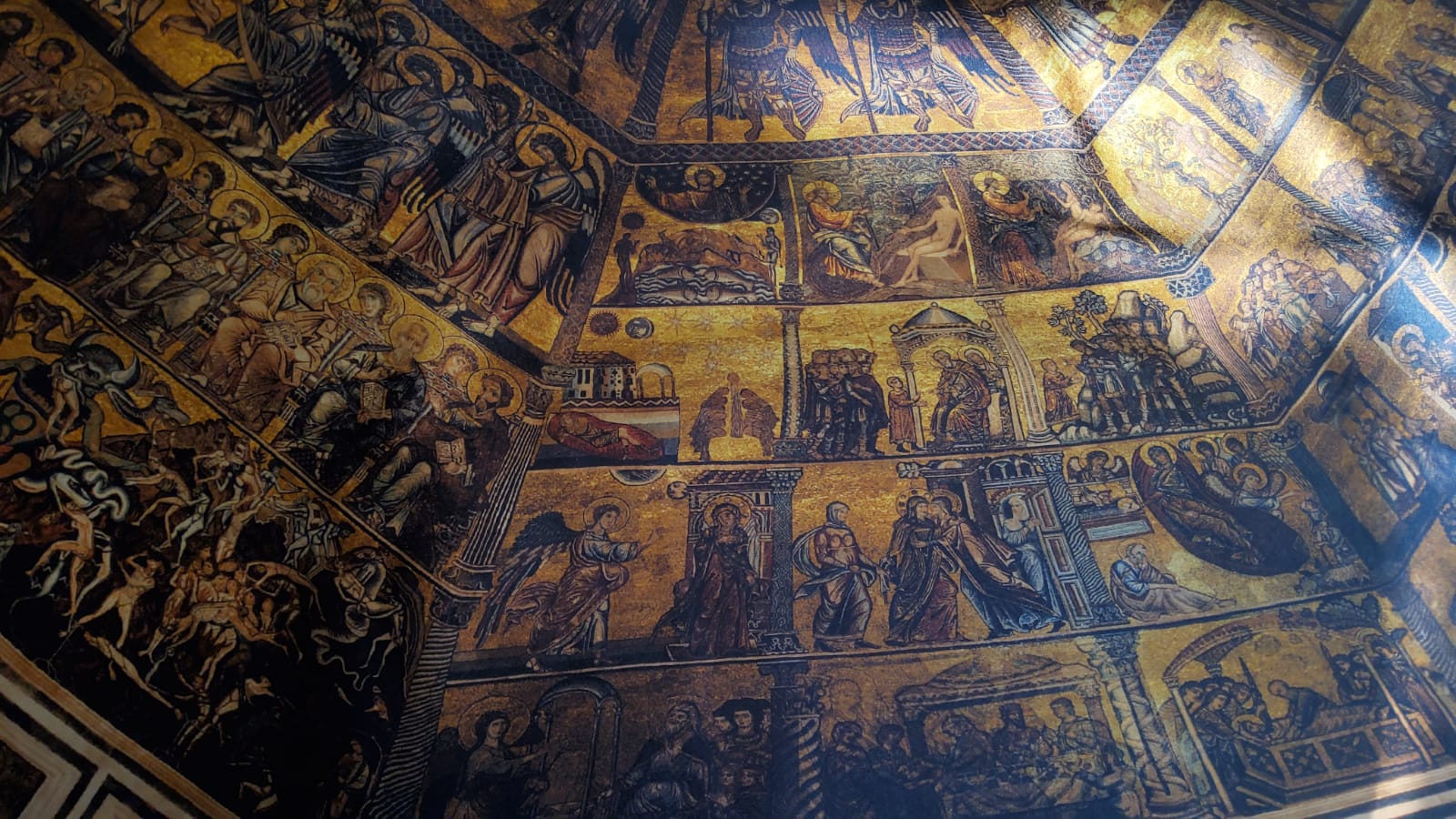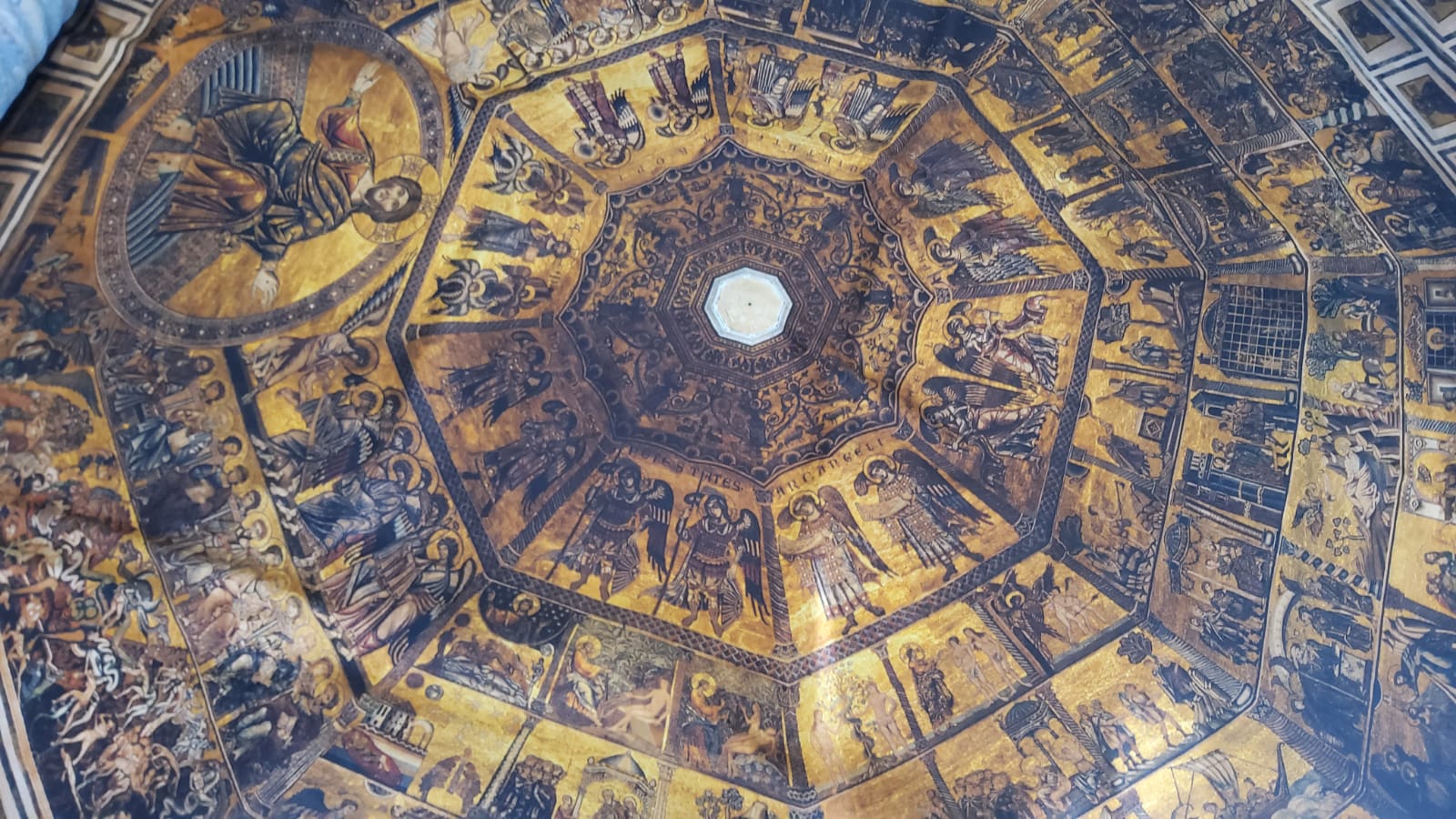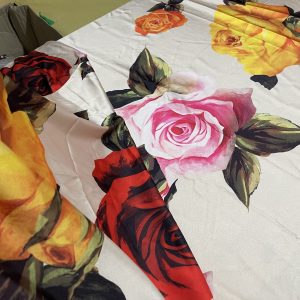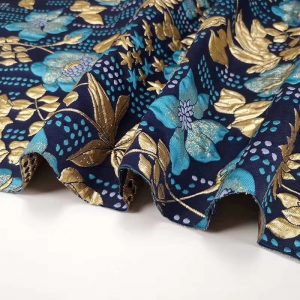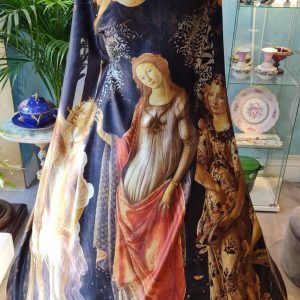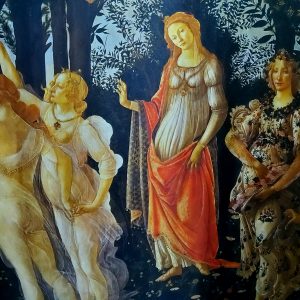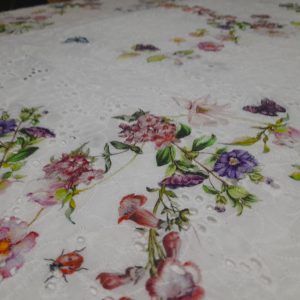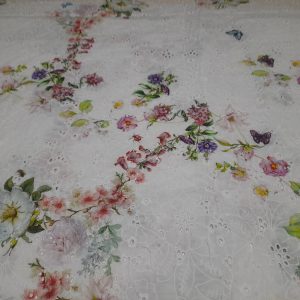Baptistery panel measures 130/130 cm
The Baptistery is renowned for its three sets of artistically important bronze doors with relief sculptures. The south doors were created by Andrea Pisano and the north and east doors by Lorenzo Ghiberti.Michelangelo dubbed the east doors the Gates of Paradise.
The Italian poet Dante Alighieri and many other notable Renaissance figures, including members of the Medici family, were baptized in this baptistery.
The building contains the monumental tomb of Antipope John XXIII, by Donatello.
It was once believed that the Baptistery was originally a Roman temple dedicated to Mars,the tutelary god of the old Florence. The chronicler Giovanni Villani reported this medieval Florentine legend in his 14th – century Nuova Cronica on the history of Florence.Excavations in the 20th century have shown that there was a 1st-century Roman wall running through the piazza with the Baptistery, which may have been built on the remains of a Roman guard tower on the corner of this wall, or possibly another Roman building including a second-century house which was restored in the late 4th or early 5th century.It is certain that an initial octagonal baptistery was erected here in the late 4th or early 5th century. It was replaced or altered by another early Christian baptistery in the 6th century. Its construction is attributed to Theodolinda, queen of the Lombards, to seal the conversion of her husband, King Authari.
Octagonal design Edit
The octagon had been a common shape for baptisteries for many centuries since early Christian times. Other early examples are the Lateran Baptistery that provided a model for others throughout Italy, the Church of the Saints Sergius and Bacchus in Constantinople and the Basilica of San Vitale in Ravenna .
Construction Edit
The present much bigger Baptistery was built in Romanesque style around 1059, evidence of the growing economic and political importance of Florence. It was reconsecrated on 6 November 1059 by Pope Nicholas II, a Florentine. According to legend, the marbles were brought from Fiesole, conquered by Florence in 1078. Other marble came from ancient structures. The construction was finished in 1128.
An octagonal lantern was added to the pavilion roof around 1150. It was enlarged with a rectangular entrance porch in 1202, leading into the original western entrance of the building, that in the 15th century became an apse, after the opening of the eastern door facing the western door of the cathedral by Lorenzo Ghiberti. On the corners, under the roof, are monstrous lion heads with a human head under their claws. They are early representations of Marzocco, the heraldic Florentine lion (the symbol of Mars, the god of war, the original male protector of Florentia, protecting a lily or iris, the symbol of the original female patron of the town, Flora, the fertile agricultural earth goddess).
Between the fourteenth and sixteenth centuries, three bronze double doors were added, with bronze and marble statues above them. This gives an indication that the Baptistery, at that time, was at least equal to the neighbouring cathedral in importance.

